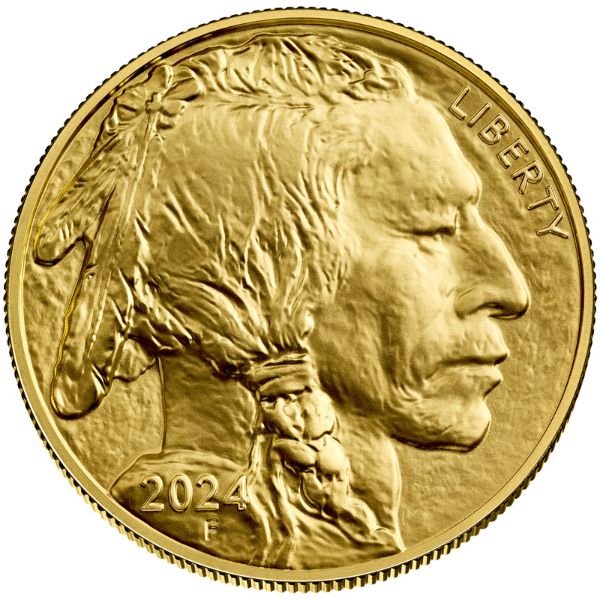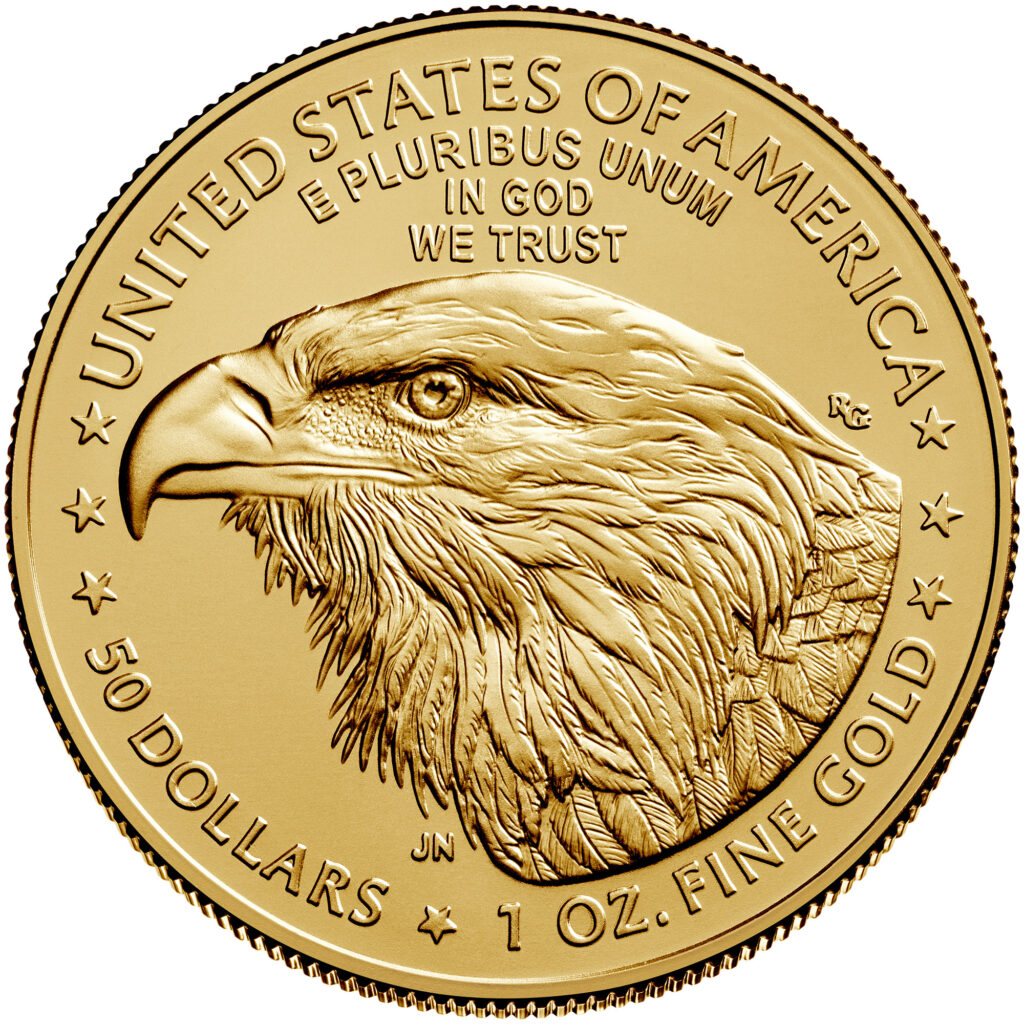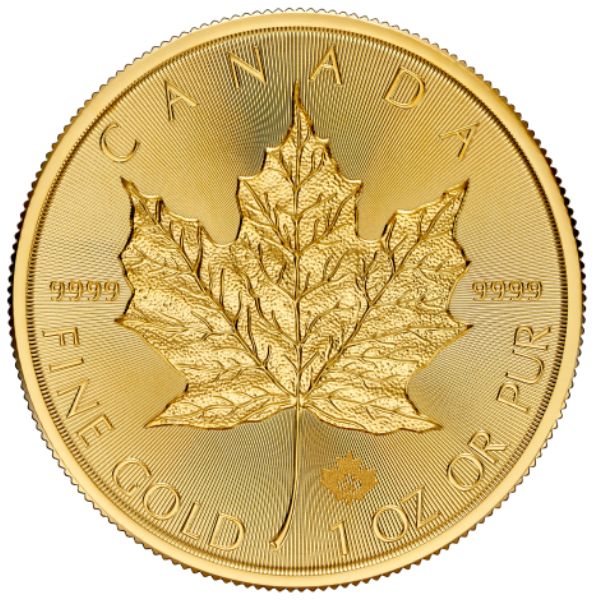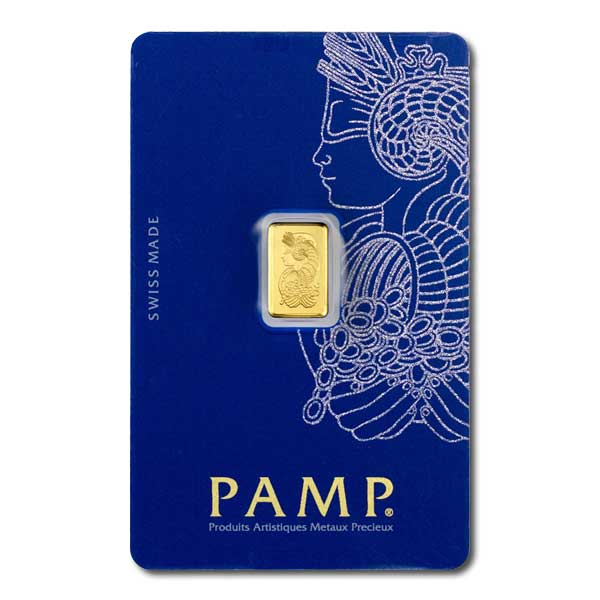Understanding Gold’s Spot Price

Around $434 billion dollars of gold was traded in 2021. This makes the precious metal the 7th most commonly traded commodity on the planet. Not all gold physically changes hands. In fact, only a small fraction (1.2%) of COMEX gold futures are physically settled.
The bulk of the world’s physical gold trade is settled using gold coins and bars. Whether investors put their money into gold stocks and futures of physical products, understanding how gold is priced can be confusing.
Gold’s value is quoted using its spot price. In simple terms, spot price refers to the market value of one troy ounce of pure gold bullion. But as investors probably know if they’ve spent any time researching gold coins and bars, the simple answer almost never tells the whole story.
Gold’s spot price is determined by multiple factors, including supply/demand dynamics, investor speculation, and a set of general economic indicators.
Today, the Bullion Academy is walking investors through everything they need to know about understanding gold’s spot price.
What Does Spot Price Mean For Gold?
“Spot price” is an industry term used to describe the current going-rate for one troy ounce of pure gold bullion. Physical gold products like coins and bars are never actually sold at spot price – they’re also marked up by a small fee called a premium. When dealers talk about spot price, though, they’re just referring to what gold itself is worth at a given moment.
Gold’s spot price can change drastically from day to day. As with most investment values, gold can become cheaper or more expensive, depending on several different factors. Investors should pay careful attention to gold’s spot price, since a major dip may be a signal to buy. Similarly, gold stackers who see gold hitting an all-time-high might consider selling their coins and bars to secure some profit before prices crash again.
Spot Price Explained
Spot price isn’t unique to gold. The term “spot contract” is often used to describe a transaction where a buyer agrees to pay the current market rate for a security or commodity. Investors might hear brokers refer to spot price when referring to commodities other than gold or silver, but the term is most commonly used within the precious metals market.
For gold, spot price is the value that investors should expect to pay for a single ounce of pure gold before premium and shipping fees are applied.
Gold’s Spot Price Explained
For new investors, figuring out how to make sense of gold’s spot price can be tough. Luckily, the concept isn’t quite as difficult as it might seem. In reality, investors should think of gold just like they evaluate any other commodity.
Let’s take a look at how gold’s spot price is determined.
How is Gold’s Spot Price Determined?
Gold’s spot price is a representation of an exchange’s assessment of demand for the precious metal. When a greater-than-average number of investors are trying to buy gold bullion, gold’s spot price increases. In periods where demand is low and plenty of stackers are ready to sell, investors will see a lower gold spot price.

This is a truncated explanation, of course. In reality, gold’s spot price is determined by several different factors. Some of these indicators are easy to measure, and others are more complicated.
Factors Behind the Value of Gold
The three main factors that influence the current spot price of gold include:
- Supply and Demand. When demand for gold is high and many investors want to buy the metal, its spot price increases.
- Investor Speculation. Major news breaks like Federal Reserve minutes cause investors to ‘guess’ at whether gold will move up or down, which can artificially inflate or deflate the value of the metal.
- General Economic Indicators. Gold often has a negative correlation with traditional indicators of economic growth. This means that gold’s spot price tends to increase during periods of high inflation and low interest rates.
Below, investors will find an in-depth analysis of the factors behind gold’s spot price.
Gold’s Supply and Demand
Supply and demand plays an essential role in determining gold’s spot price. At its core, the spot price of gold is a function of an exchange’s assessment of demand for the metal. When interest in buying gold spikes, gold’s spot price will increase to account for inflated demand.
Similarly, gold’s spot price will decrease if there are many people selling gold but few people looking to buy. Supply and demand is a classic concept in economics, and the gold market is no exception. When demand is high, prices increase. And when supply outpaces demand, investors should brace for diminished gold spot prices.
Investor Speculation
Like all commodities, the market for gold is influenced by investor speculation. Gold’s spot price often shifts in anticipation of key news updates. One common example of this phenomenon is the release of Federal Reserve Minutes. Since lower interest rates generally lead to higher gold spot prices, gold tends to jump in the few days before minutes are anticipated to be released by the Fed.

The relationship between Federal Reserve minutes and gold’s spot price is helpful to illustrate the role investor speculation plays in the value of a commodity. Sometimes, the Fed minutes don’t actually suggest lower interest rates. When this happens, gold’s spot price readjusts. But in the lead-up to an important news announcement, investors speculate on the news and drive gold prices up or down as a consequence.
General Economic Indicators
Another major factor in determining gold’s spot price is general economic data. Economic indicators are also used to speculate on traditional stock values, but gold is a bit unique when it comes to how this data is applied.
Gold bullion is considered a non-correlated asset. Non-correlated assets like gold aren’t driven by the same economic forces that influence regular asset values. Take unemployment data as an example. As an economic indicator, high unemployment is usually bad for stocks and bonds. Gold’s spot price, however, tends to go up when unemployment rates rise. This non-correlation is one reason why gold is considered a great safe haven asset.
Investors should be careful when using economic indicators to inform their gold stacking efforts. Since gold’s correlation with traditional indicators is different from most other assets, predicting gold’s spot price based on economic data can be tricky.
Who Sets the Spot Price of Gold?
No single person is in charge of determining the spot price of gold. Historically, it has been the London Bullion Market Association (LBMA) who has set gold’s price. Gold spot prices are updated twice daily by this organization, which uses factors like supply and demand to determine how much a single troy ounce of gold should be worth given market conditions.
How Often Does the Spot Price of Gold Change?
While LBMA sets gold’s spot price two times per day, investors might notice that the spot price of gold listed on our website is updated constantly. Using advanced algorithms and factoring in supply and demand, exchanges are able to provide up-to-date quotes for gold’s spot price throughout the day.
Hero Bullion uses the same spot price as most other dealers, and we’ve integrated the spot price tickers at the top of this page to make sure they stay as contemporary as possible.

Buying Gold at Spot Price
We’ve covered the basics about gold’s spot price. But for investors just getting started in this unique market, finding cheap gold can seem like an impossible task. Once gold buyers understand the basics of gold’s spot price, buying gold without getting price-gouged shouldn’t be hard.
Before we sign off for the day, we’ll run readers through a very brief guide on how to buy gold for cheap. As a gold stacker, your goal should be to purchase gold bars and coins for as close to spot price as possible.
For readers who want to know more about how to buy cheap gold, we recommend our budget investor’s guide.
Is it Possible to Buy Gold at Spot?
It is almost never possible to buy gold at spot price. When investors buy gold coins and rounds, they’re purchasing processed products. Labor, time, and funds go into the creation of these items, which means that they can’t be sold for mere spot price.
Instead, dealers charge something called a precious metal premium on their gold bars and coins. Investors who want to save money buying gold should develop a solid understanding of how gold premiums work.
Understanding Gold Premiums
Investors who buy gold will pay more than the gold bullion’s current market value. It makes sense that gold is sold at a premium, given that gold products have been specially designed and minted before hitting shelves. Labor is involved in this process – and the cost of that labor is passed onto the consumer.

Luckily, savvy stackers who put a bit of research into their purchase can score cheap gold coins and bars without getting gouged on premiums.
How to Find Gold at Spot Price
The best way to find gold near spot price is to shop around. Different dealers offer their own specials on gold coins and bars. Hero Bullion’s newsletter delivers our best gold deals to thousands of customers every week. If you’re ready to take your investing to the next level, consider signing up for our newsletter at the bottom of this page.
For budget stackers, the type of gold bullion they buy is extremely important. Even if you manage to find a dealer’s best price on a given gold coin, you might be leaving money on the table by overlooking the cheapest way to invest in gold: gold bars.
Cheapest Ways to Invest in Gold
The cheapest way to buy gold near spot price is to invest in gold bars. While gold bars have their own classic aesthetic, they don’t usually feature the complex, intricate designs that many gold coins offer.
This diminished production value makes gold bars a fantastic choice for investors who are looking to stack on a budget. Gold bar premiums are some of the lowest in the industry, so we recommend this type of product to collectors who are tired of paying high premiums on gold.
If you’re set on investing in gold coins but don’t want to get hit with hundreds of dollars in premiums, consider buying off-year coins or Any Mint, Any Condition (AMAC) gold coins. These choices may not be the prettiest, but they contain real gold and might sell at a fraction of the premium cost of popular, in-demand gold coins.
Final Thoughts: Gold’s Spot Price and You
Gold’s spot price may seem complicated, but it’s really a simple system. In short, gold spot prices are determined by the supply and demand for the metal on international markets. London’s LBMA sets the spot price of gold twice daily, and sophisticated tools allow traders across the globe to ‘agree’ on a set price for an ounce of gold bullion. This is, in essence, gold’s spot price.
You might also be interested in:
About The Author
Michael Roets
Michael Roets is a writer and journalist for Hero Bullion. His work explores precious metals news, guides, and commentary.
